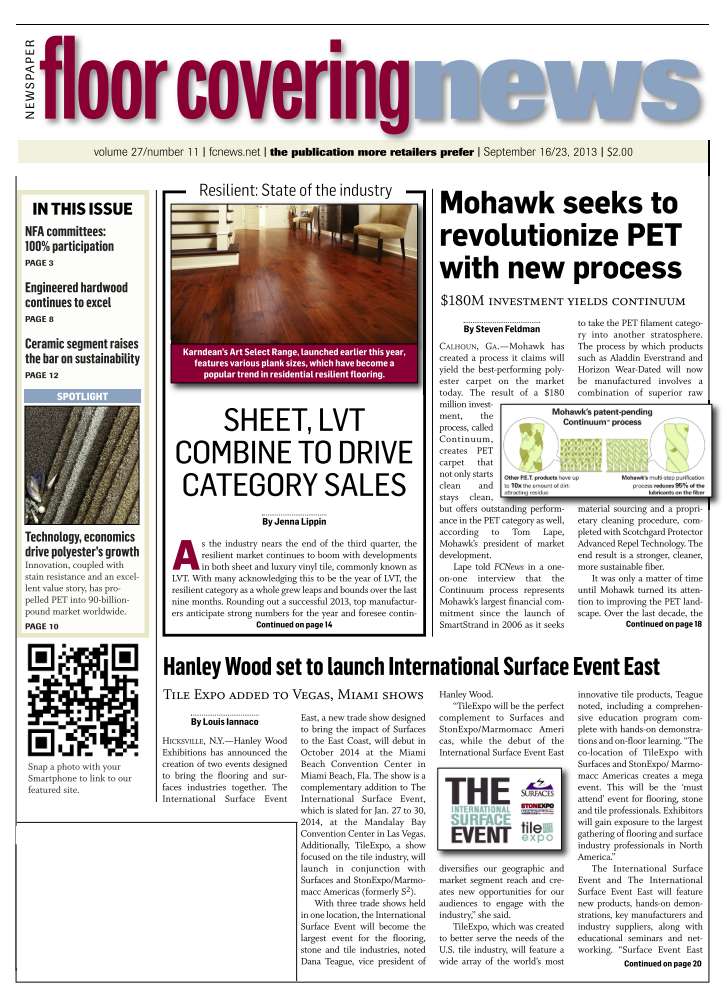Sept. 16/23 2013; Volume 27/number 11
By Bart Basi
 Unfortunately, businesses in this country and all over the world face a gauntlet of peril. From rising fuel and commodity prices to clients filing bankruptcy on their payables to those not paying due to adverse credit climates, maintaining a business is a challenging endeavor for any line of work. However, there are threats even beyond the day-to-day and year-to-year challenges.
Unfortunately, businesses in this country and all over the world face a gauntlet of peril. From rising fuel and commodity prices to clients filing bankruptcy on their payables to those not paying due to adverse credit climates, maintaining a business is a challenging endeavor for any line of work. However, there are threats even beyond the day-to-day and year-to-year challenges.
It was almost a year ago that Superstorm Sandy swept through the Northeast. In its aftermath, approximately $77 billion of insured losses have been reported. The legacy it leaves behind on the businesses of the Northeast is, unfortunately, ongoing. Many businesses in the area never reopened. In this case, as in many, the terrible results of natural disasters are often felt for a long time or even possibly forever.
In the past 15 years, natural disasters have increased 40%. In terms of human suffering, property loss and the potential failure of a business in the wake of hurricanes and other natural disasters, preparation is necessary. With disaster planning, a company can and should anticipate continuing operations in at least some capacity.
Planning for the worst
The absolute worst thing you can do in preparation for a natural disaster is nothing at all. Waiting until it is broadcast on the radio or you see a major storm system develop on the news is not the time to begin your preparation for a disaster. At that point, communications and electrical systems may already be failing area-wide. Critical supplies needed for business continuation may have already been sold out of stores. Therefore, secondary protocol in people, location and supply is absolutely necessary at all times. Out-of-state suppliers and friendly competitors should be reviewed for viability in these potential circumstances.
The best thing a business owner can and should do to continue business during and after a disaster is to begin preparation immediately. Talk to people who are going to help with the disaster plan. Talk to secondary suppliers. Think about where business will be conducted in the event the primary location is unavailable. Here are some basics:
1) Writing instruments and communication
Writing instruments are a necessity. Reducing a plan to writing is the first step to make a plan achievable.
Ready.gov provides a written form that your business can use to prepare and commit a plan to paper. Check-signing authority in an alternative person is necessary in the event a key individual is not available.
2) Security
If you provide consumer goods, security is a must. Reasonable measures must be taken in order to, if not defend the store, provide footage for law enforcement to catch the individuals responsible for the crimes that could be committed, such as looting.
3) Finances
Without the proper finances in place, your business could be shut down. Modern-day financing relies heavily on electronic mediums such as credit card readers and telecommunications. If there is no power, there is essentially no money. Solutions to the situation may not be easy. Two scenarios come to mind: a back-up generator or a remote location where business can be conducted.
Also, your employees will need financial assistance during this time period as well. Two weeks of pay can ensure that employees can pay their bills and endure. It also means they will come back because they are obligated to work for the pay advance with which you provided them. This assurance is a good thing to have, especially when key employees may be having second thoughts about returning after a large natural disaster.

